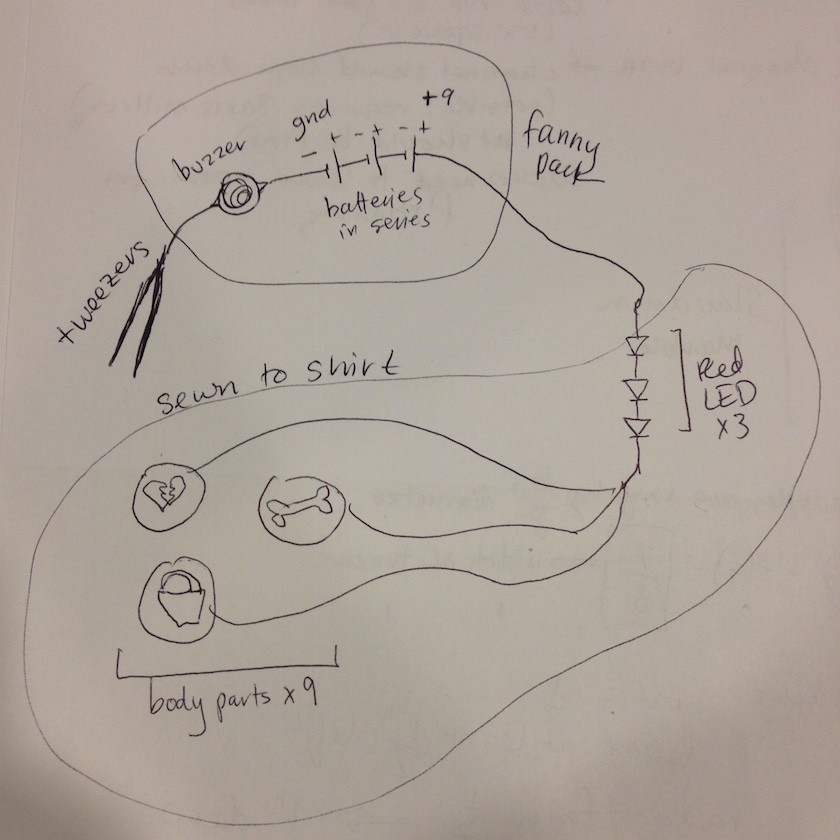Bonus: Fab-o-ween Costume
The Operation Game
October 2015
In the months leading up to Halloween, I was feeling very inspired and empowered by the skills I was learning in HTMAA, and decided to incorporate them into my Halloween costume. I've always had somewhat lackluster Halloween costumes that were thrown together at the last minute; I decided that, with the power of the CBA Shop on hand, this was my year to do something awesome. (N.B. When I was really little, my Mom would make me incredible hand-sewn costumes, so I should really say that all the costumes I've made myself have been lackluster, mostly due to lack of time.) After some brainstorming, I decided to try to make an Operation Game costume that was actually...operational.
After some Internet searching, brainstorming, and sketching, I came up with a design for my costume. The Operation Game is a simple analog circuit. You have a set of tweezers in series with batteries, a buzzer, and LEDs. The "body parts" are mounted on conductive surfaces that are in the circuit. When the tweezers touch these conductive surfaces, the circuit is completed, and the LEDs and buzzer go off. The goal is actually to *not* complete the circuit, but I found that the more interesting behavior and interactions happened when the circuit was completed. Here's a simple sketch:

I decided to laser-cut the body parts from white acrylic, then mount them, using velcro, on buttons wrapped in aluminum foil. The buttons would attach to my shirt, and I would connect the buttons to the rest of the circuit using thin magnet wire. I also planned to stitch a few LEDs into the collar of the shirt, which would also be connected to the circuit using wire. To design the body parts, I found raster images on the internet, converted them to vectors in Inkscape, then laid them out in Rhino.

The laser cutting went very smoothly. I used solder to connect the tweezers, batteries and buzzer. I carried these items in a fanny pack. I mounted the body parts using velcro and tape.




The biggest difficulty of this project was connecting the mounted body parts and LEDs to the rest of the circuit using magnet wire. First, you need to sand the ends of the magnet wire to expose the conductive part. This ended up being very time consuming since I was using 10+ pieces of wire. Second, since I assembled the final stage of the costume at home, I used electrical tape instead of solder to connect the wire to the buttons and the LEDs. Big mistake! Since I was moving around in the costume, the wires kept coming undone. I had to troubleshoot my costume circuit with a multimeter several different times during the evening. Despite these difficulties, the costume worked most of the time, and was a huge hit! Here's a video of the costume in action: